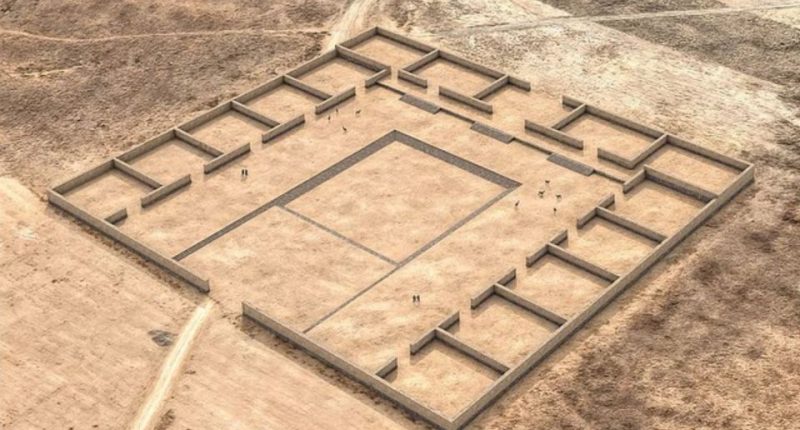Share this @internewscast.com
A MASSIVE stone temple built 1,000 years ago has been uncovered, revealing the secrets of an ancient civilisation.
In a remote region of South America, the ancient edifice referred to as Palaspata was uncovered, believed to have been constructed by the Tiwanaku civilization.
Sitting on top of a ridge near Lake Titicaca, in western Bolivia, the temple is an impressive feat of craftsmanship.
But due to its remote location, researchers only spotted the area when they spotted unusual shapes in satellite photos.
Drone 3D imaging confirmed the ancient site with researchers believing it provides key insight into the Tiwanaku civilisation.
The ancient society was a powerful Andean civilisation that existed around 400 to 1000 CE.
According to researchers, the Tiwanaku people were part of a “highly organized societal structure,” which produced remarkable monuments such as pyramids, temples, and monoliths.
Most of these are located in sites around Lake Titicaca.
Although not much of it survives today, specialists suspect that the temple was once home to a sophisticated irrigation system, along with exquisite art and pottery, prior to its disappearance around 1000 AD.
The site measures around 410 feet long by 476 wide and features 15 rooms which encircle a central courtyard.
Archaeologists suggest over 20,000 people may have inhabited the area, believing it to have been a “strategic hub” or “entry point” for trade.
It is believed the temple enabled access to a number of goods and foods.
Lead researcher José Capriles told the Mail Online: “This was not just a temple, it was a strategic hub, an entry point between the highlands and lowland trade routes.
“This was a place where people, goods, and gods all crossed paths.”
The discovery comes just weeks after an ancient Mayan city was discovered by archaeologists in northern Guatemala.
The nearly 3,000-year-old remains include remarkable pyramids and monuments that appear to be “sculpted with unique iconography”.
This ancient city, named Los Abuelos – the Spanish for “The Grandparents” – once stood around 21km from the significant archaeological site of Uaxactún, Guatemala’s culture ministry said on Thursday.
Los Abuelos gets its name from two human-like sculptures of an “ancestral couple” found there.
These figures “could be linked to ancient ritual practices of ancestor worship”, the ministry added.
The city is likely to have been “one of the most ancient and important ceremonial centres” of Mayan civilisation.
Monuments unearthed at the site have been dated to the Middle Preclassic period of 800-500 BC, while the city itself “presents remarkable architectural planning”.
The city covers an area of around six square miles and is found in Guatemala’s northern Petén department.
Researchers also found a 108 foot high pyramid nearby that had Preclassic murals and “a unique canal system”.
“Archaeological investigations have included the active participation of Guatemalan and international professionals, with the support of the Comenius University in Bratislava, Slovakia,” a ministry spokesperson said.



















